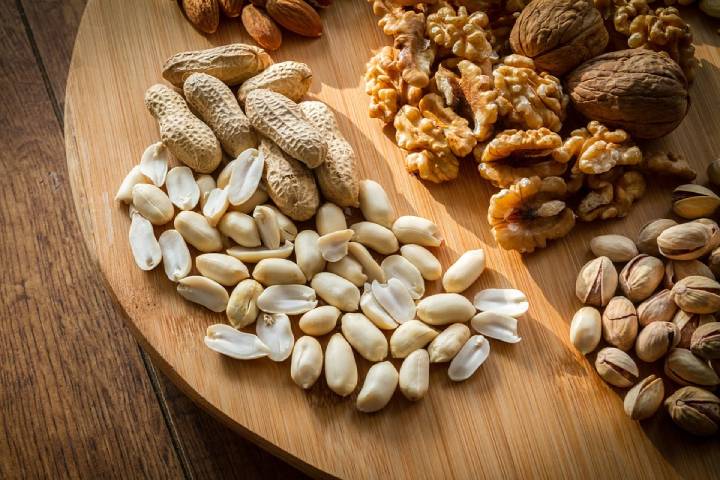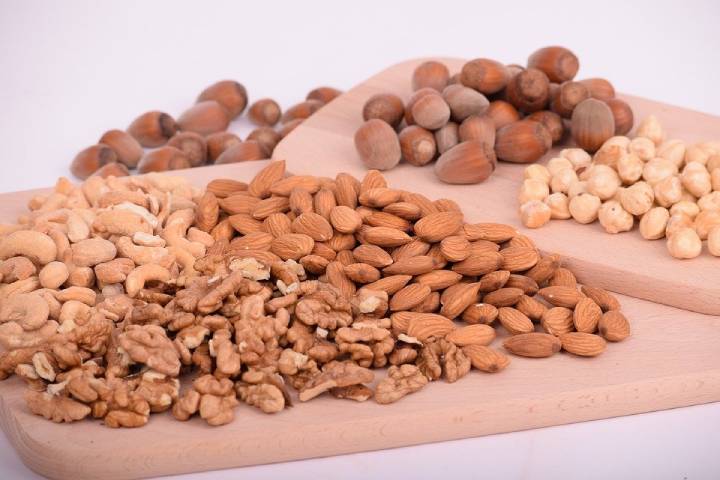Does vegetable protein exist?
Yes. Although many people believe that only foods of animal origin have proteins, most foods have them significantly or minorly. Those of vegetable origin (cereals, legumes, nuts) are no exception.
Vegetable protein foods
As you can see in this list, plant-based foods with high protein content, such as the textured soy you see in the photo.
1. Amount Of Protein In Plant Foods
Proteins per 100 g according to data from the USDA (United States Department of Agriculture).
- Textured soybeans: 50 g
- Peanuts: 23.7 g
- Almonds: 21.2 g
- Seitan: 21.2 g
- Oat flakes: 16.8 g
- Cooked soybeans: 16.6 g
- Walnuts: 15.2 g
- Hazelnuts: 15 g
- Bread: 9-13 g
- Tofu: 8-12 g
- Cooked lentils: 9 g
- Cooked chickpeas: 8.9 g
- Cooked beans: 8.5 g
- Cooked pasta: 5.3 g
- Soy yoghurt: 4.6 g
- Cooked quinoa: 4.4 g
- Cooked amaranth: 4 g
- Soy milk: 3 g
- Cooked rice: 2.3 g
2. Amount of vegetable protein needed
If no animal protein is eaten (neither eggs nor dairy), Lucía Martínez says that a well-planned diet that includes daily servings of legumes and derivatives, nuts, seeds, and whole grains can perfectly cover our protein needs.
And we do not need to be aware of adding the grams of protein we eat: “It is enough to include a portion of quality protein food in each intake, or at least in the main intakes.” This means that in all meals, we include a serving of quality vegetable protein.
3. Recommended Servings
Approximate servings of vegetable protein for adults.
Legume: A full plate.
Legume + cereal: A plate filled with one half of each, or a little more legume than cereal.
Tofu, seitan and tempeh: A serving the size of the palm of your hand.
Textured soy: Half a glass (hydrated).
Nuts: A handful.

4. But is plant protein just as ‘good’ as animal protein?
Of course. It is often said that only animal proteins are complete. That is to say that, in their composition, they have all the essential amino acids and in sufficient quantity. However, Lucía Martínez warns that it is not valid: ” Soybeans, chickpeas, some types of beans, pistachios, quinoa, hemp seeds, amaranth or spinach also contain them.”
Now, he recognizes that “although their proteins are of good quality, the amount they contain is low, so we would have to eat a large quantity to obtain a remarkable protein ration”; and also explains that some plant foods fall a little short of some of the essential amino acids.
5. How to get complete plant proteins
As Lucía Martínez explains, the trick to compensate for the lack or scarcity of an amino acid in a particular food of plant origin is to combine it with another that has it.
For example, the vegetable protein in legumes is low in an amino acid that cereals do have. By joining the two foods, “they complement each other, and we obtain complete proteins, with all the essential amino acids in sufficient quantities,” he explains.
However, contrary to popular belief, it is not mandatory to combine them in the same meal: “Eating lentils with rice is just as effective as eating rice and having lentils for dinner,” he continues to explain. Our body stores amino acids and uses them as needed.
“For this reason, it is not necessary to make combinations of foods in the same plate, not even in the same meal to ensure complete proteins,” he concludes.
6. Suitable combinations of vegetable protein
If you still want to ensure both by combining vegetable protein to complete in the same meal, here are the three main ways to incorporate it.
- Legumes with cereals: lentils with rice, hummus with bread, corn fajitas with beans, bean burgers with oatmeal
- Legumes with nuts: chickpea salad with nuts, pea and almond flour burgers, lentils and macadamia paté.
- Cereals with nuts: rice with almonds, walnut bread, almond cakes, oatmeal cookies with nuts
7. And is vegetable protein digested the same as animal protein?
Not quite. It is more difficult for our body to digest and take advantage of plant protein because it is necessary to break the wall of plant cells to reach it. In addition, it contains compounds called antinutrients that make it challenging to absorb other elements.
How to solve it? Soaking, cooking, and sprouting increase digestibility and effectively counteract antinutrients. This is, for example, what has been done all his life with legumes, leaving them to soak and cook them later.

